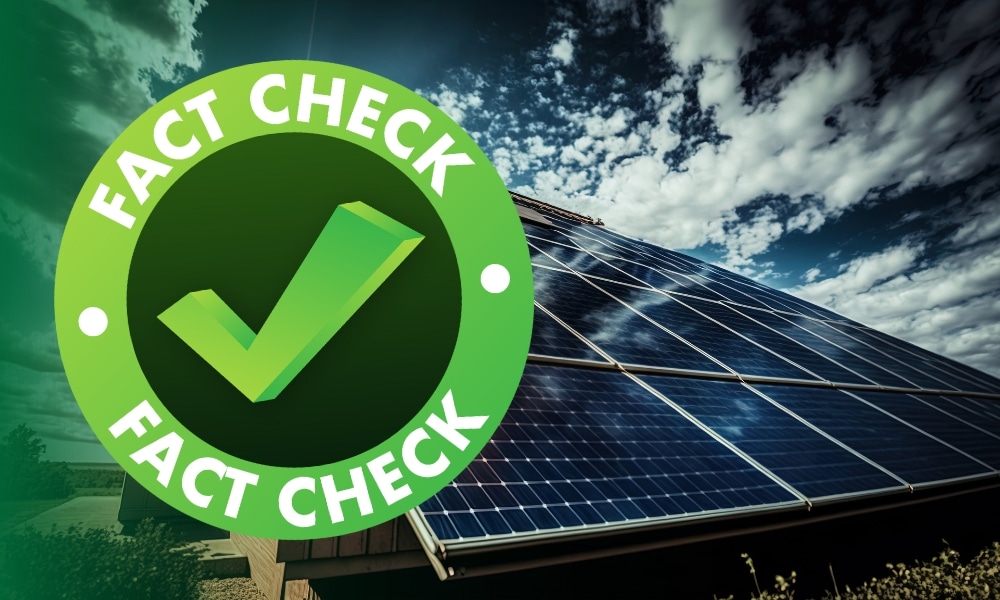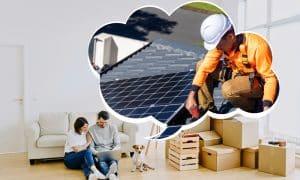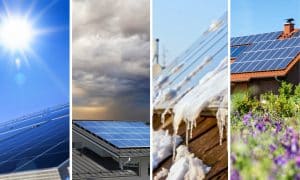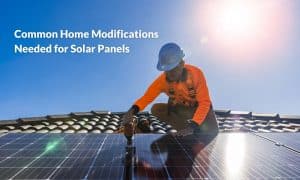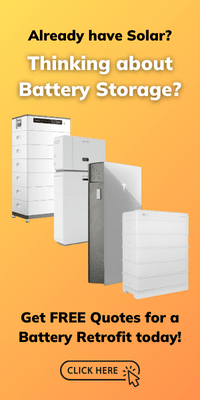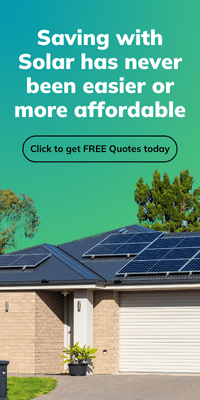There’s a lot of conversation and controversy around renewable energy, especially as the climate crisis continues to expand. But the innovations and advancements in the industry have also been tenfold, powering up new opportunities for the global market.
However, separating the truth from the myths is half the challenge, and we commonly hear misconceptions about how solar energy really operates. So what are the actual benefits, what can you expect, and what’s plain misinformation?
In this post, we tackle your biggest solar energy myths and squash those that aren’t so accurate with some solar power facts. Let’s set the record straight about the truth about solar panels in Australia.
On this page
Myth 1: Solar panels need continuous sunlight to operate
Modern designs mean that panels don’t need direct, consistent sunlight to function. Overall, systems use natural daylight that’s then converted into electricity by the panels and the inverter. The heat from the sun is not what your solar panels use to create energy. What will be affected by indirect sunlight is the amount of power your panels will generate. In summer, peak solar generation occurs between 10am and 4pm. During winter, the hours shorten to 11am to 2pm.
In Australia, the best orientation for solar panels is north, as this will provide the most consistent sunlight throughout the day. East and west-facing panels will provide power in the morning (east) and the night (west). South facing panels will receive the least amount of sunlight and are not recommended.
Because of battery storage technology, excess electricity can also be stored for use after peak periods of daylight, so your home can use solar energy even when there’s no sun.
Myth 2: Installing solar panels is expensive
Australia’s emissions reduction targets have drastically reduced the upfront cost of solar panel installations. This is due to the federal government’s Small-scale Renewable Energy Scheme (SRES) for homes and small businesses, and the Large-Scale Renewable Energy Target (LRET) for commercial and industrial applications.
These schemes have brought with them incentives to install solar and other eligible renewables. Your home solar system will be assigned a designated amount of STCs (Small-scale Technology Certificates) that will give you an upfront discount on the cost of your system.
Along with federal incentives come some state rebates and programs. VIC and NSW are currently benefitting the most from these programs, however, solar is significantly cheaper today in all states than even 5 years ago.
The continued reduction in the cost of installing solar is widely due to advancements in technology and competition in the industry.
Most solar installers also offer solar financing – further reducing the financial burden of solar and allowing Australians to start saving immediately.
Find out more about rebates and incentives for solar panels
Myth 3: Solar panels require a lot of maintenance
A common solar panel misconception is that they require continued maintenance.
Your panels will be installed at a minimum angle of 10°, allowing water from the rain to run off. It is the rain that will keep your panels mostly free of dust and debris between actual cleaning. It is recommended that you clean your panels at least twice a year.
Beyond cleaning, your panels and system require minimal maintenance. Ensuring that your solar panels and inverter are clear from leaves, birds’ nests, and other hazards, is usually the most you’ll need to do for the lifespan of your system.
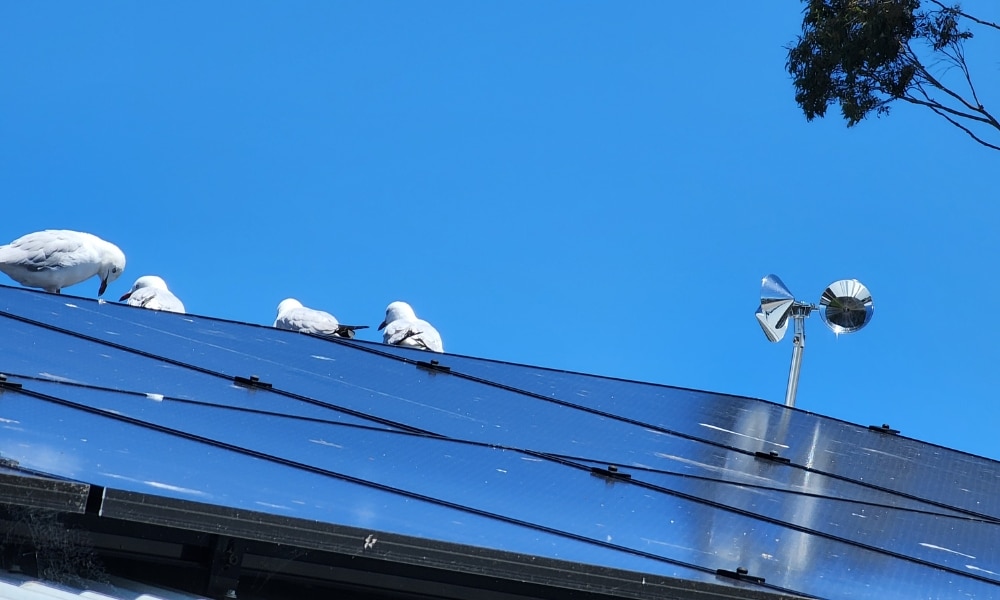
Myth 4: As soon as you get a solar system, you can go off-grid
Going off-grid and electrifying your home is an increasing dream for many Aussies. Imagine saying goodbye to electricity and gas bills, and the dreaded supply charge! Installing solar does not immediately offer this benefit.
An off-grid home must rely solely on the electricity generated by the solar panels. This simply is not possible without A. a large enough solar system and B. solar battery storage.
If you do want to go off-grid, special planning and designing must be implemented to ensure that you have ample solar and battery storage.
Myth 5: Solar panels will damage your roof
While possible, most solar panel installations will leave your roof damage-free. Your solar installer will assess the material of your roof and select mounting components that are the best for your roof type.
For tiled roofs, you will be required to provide spare tiles for the installation as simply walking on the roof can often cause breakage. The installers will replace any broken tiles and ensure that your roof remains leakproof.
In the unlikely event that your roof is damaged, the repair should be covered by your solar installer’s warranty. This is one of the reasons why it is imperative that you select a professional installer. Energy Matters can help you select the right installer for your home or business. Get FREE Quotes from trusted local installers.
Myth 6: Solar panels don’t last long
Imagine installing a solar system only to find that it needs replacing in a few short years. Thankfully – this is not the case! Most solar panels sold in Australia come with a minimum 25 years of performance warranty. This means that the manufacturers have deemed that the panels will produce electricity at a designated level for 25 years. This level is usually around 80% efficiency – the percentage compared to day one of operation.
Something to look out for is the panel’s product warranty. This usually ranges between 10 and 25 years. The product warranty covers certain physical attributes of the panel. REC’s ProTrust Warranty provides a 25-year warranty for product, performance, and labour when installed under the program.
Myth 7: Solar panels are unattractive and lower property values
Do you remember the old blue panels installed in the early 2010s? They were unsightly and certainly detracted from a home’s street appeal. Thankfully, technology and aesthetics have come a long way and most panels now employ monocrystalline technology. The monocrystalline silicon makes the panels black in appearance. Couple this technology with black framing, instead of silver, and you have yourself a good-looking system!
Most solar installers will now opt to avoid installing solar panels at the front of your home, where possible. For those looking to truly incorporate their panels into their home’s design, BIPV panels, like the ones available through GoodWe, allow your roof to be wholly or partially replaced with solar tiles!
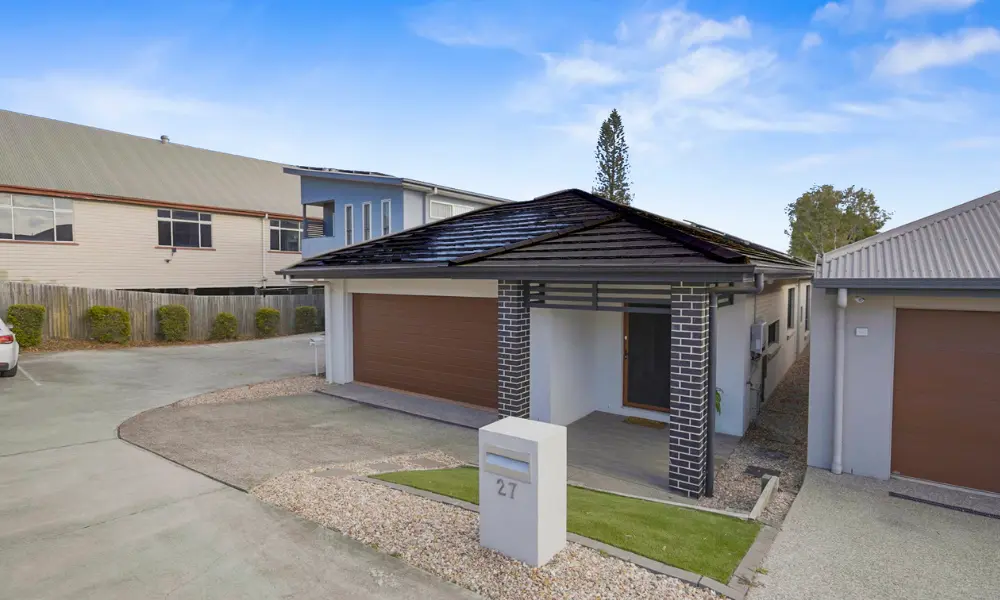
Myth 8: Manufacturing solar panels creates more pollution than they save
While the production of solar panels does require energy and resources, the overall environmental impact is significantly lower than that of fossil fuels. Over their lifetime, solar panels produce far more clean energy than the energy used to manufacture them, reducing greenhouse gas emissions.
The allocation of STCs accounts for this. One STC represents 1 megawatt-hour (MWh) of renewable electricity either generated or offset for a deemed period of time. As the SRES comes to an end in 2030, the maximum deeming period is now 7 years. If your system were to be allocated 50 STCs, this would mean that your system is expected to generate or offset 50 MWh.
The truth about solar panels
Solar energy is a clean, renewable, and reliable source of electricity. It is also becoming increasingly affordable. They are also a very reliable and low-maintenance investment.
If you are considering installing solar panels on your home or business, it is important to research and get quotes from multiple installers. By understanding the truth about solar panels, you can decide whether solar energy is right for you.
Solar facts
- Solar panels can generate electricity even on cloudy days.
- The cost of solar panels has decreased significantly in recent years.
- Solar panels are very low-maintenance.
- Solar panels are very reliable and have a 25-30 year lifespan.
- Solar panels can increase the value of your home.
- Solar panels can be installed on most homes, regardless of the size or orientation of the roof.
- Solar panels will not cause power outages.
- Solar panels are very good for the environment.
- Solar panels are completely silent.
- Solar panels can be a very worthwhile investment.
Navigating solar can be tricky, but arming yourself with solar facts will help you make an informed decision. Ready to go solar? Complete our quick quiz and we’ll connect you with up to 3 installers in your area. They’ll provide you with obligation-free quotes that you can use to determine if solar is the right choice for you. Click the button below and get started today!









